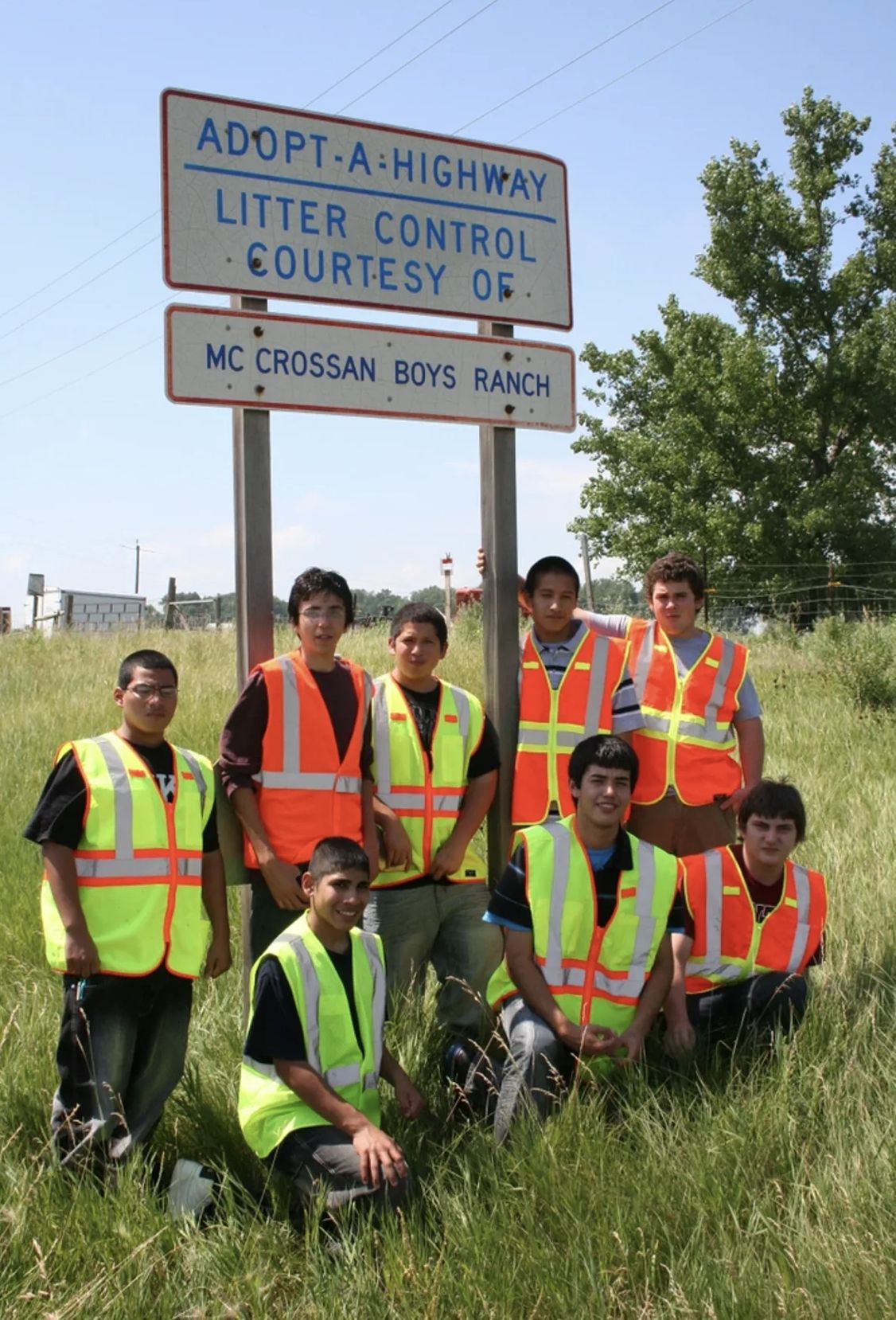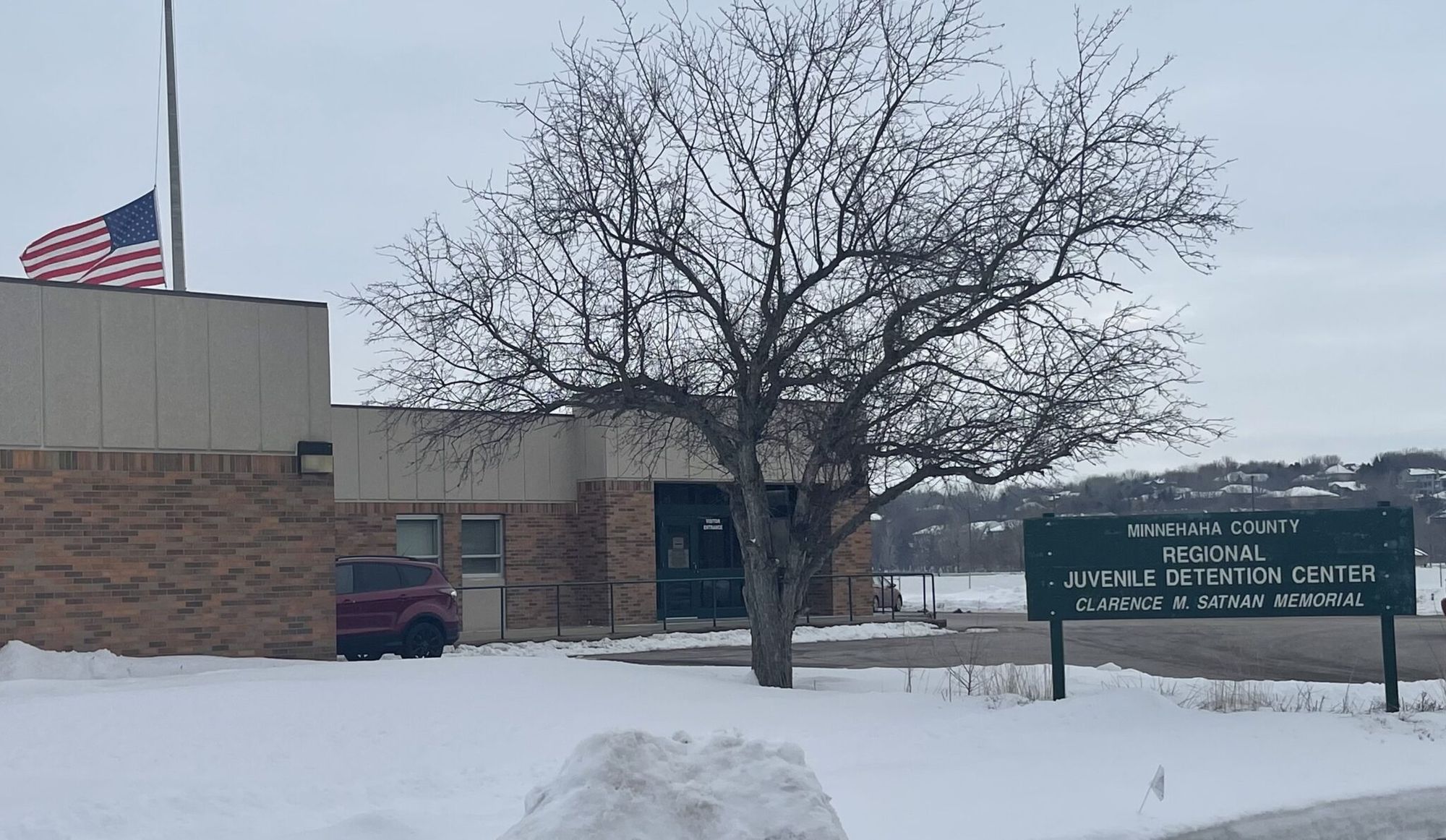One of the key tenets of juvenile justice reform in South Dakota – keeping low-level youth offenders out of custody in favor of rehabilitative services and a return to public school attendance – is causing headaches for South Dakota education officials, who say they are not equipped to deal with habitual offenders in school settings.
That balancing act is the backdrop for Senate Bill 4, one of several proposed bills resulting from a 2022 legislative summer study that explored ways to improve cooperation between schools, law enforcement and courts as the state continues to assess its youth corrections strategy amid major reforms enacted over the past decade.
Senate Bill 4 is a proposal to amend existing law so that a juvenile who re-offends after three “separate and distinct criminal episodes” in a 6-month period be committed to the South Dakota Department of Corrections system, which could mean hard detention, foster care or a placement such as McCrossan Boys Ranch in Sioux Falls or New Beginnings Center in Aberdeen.
NEWS WATCH POLITICS: See more coverage on legislative issues
The bill, being considered by the Senate Judiciary Committee, could be adjusted to increase the span of violations from six months to a year. The proposal comes as legislators are also considering legislation to study an optional educational path for troubled students and to improve communication between law enforcement and schools when a student is suspected of threatening violence or violating drug or alcohol laws.
These issues are the core of South Dakota’s quest to find the right balance between consequences for kids who commit serious crimes and encouraging counseling and family services for those determined to be less of a threat. The fact that the latter group frequently returns to public school classrooms has become a source of frustration for educators, who say they end up doling out discipline they feel should be handled by the courts while worrying that some potentially dangerous students may end up in schools.
“No one wants to go back to the way things were before (reforms were adopted),” said Tim Graf, superintendent of the Harrisburg School District, the state’s third-largest system. “For a while, there were too many detentions, but like many things it could be that the pendulum has swung back too far. We’re trying to find solutions that are effective for schools and law enforcement while still addressing the initial concern.”
South Dakota ranked first per capita in the nation for locking up juveniles before implementing the Juvenile Detention Alternative Initiative (JDAI) in Minnehaha and Pennington counties in 2010, followed by legislation in 2015 that restricts scenarios in which a youth offender can be detained. The law also offers financial incentives for counties that provide “diversion opportunities” such as support counseling rather than detention for young offenders.
Pennington County’s diversion programs include a teen court, where offender cases are presented to a jury of their peers by teen volunteer attorneys, and a truancy prevention program that addresses the root causes of a child’s behavior and links students and families to social services as needed. These methods can be used for juveniles facing charges such as underage drinking, shoplifting, marijuana possession, simple assault and truancy.
The state juvenile corrections population has decreased from 520 individuals in Fiscal Year 2015 to 170 in Fiscal Year 2022, with judges more likely to utilize diversion programs, community supervision or house arrest with an ankle monitor unless offenders are viewed as a threat to public safety. In most of these instances, the child is expected to continue to attend public school, although some alternative education opportunities exist.
“A lot of times the child is released on conditions, and those conditions are going to involve going to school,” said Annie Brokenleg of the South Dakota Unified Judicial System, who serves as statewide coordinator of the state JDAI. “The judge is going to want that kid going to school, because that’s a protective factor for that kid.”

Schools want to see more accountability
These diversionary measures are a matter of concern for some school and law enforcement officials, who see a lack of accountability in the courts that can lead to a “revolving door” of the same juveniles getting arrested and then placed back under parental supervision and in school settings, sparking concerns about disruptions and campus safety.
Wade Pogany, executive director of the Associated School Boards of South Dakota, stressed to the Senate Judiciary Committee on Jan. 17 that the concern is with severe delinquency cases that administrators, teachers and counselors are not equipped to handle.
“We’re going to have kids who run away or vape or commit petty crimes; we can handle that,” Pogany said. “What we’re really talking about are kids who are repeat offenders involved with serious crimes. I really can’t understand how a student can be arrested on a firearms violation or grand theft auto and then be back in the school system again. It’s not every day, but it’s becoming more prevalent that we hear of these things happening.”
Emma Otterpohl, a deputy public defender in Minnehaha County who specializes in juvenile cases, disputed the notion that a youth on house arrest should not be in a school setting. Sometimes it is a simply a case of having run away from home in the past and requiring greater supervision, she said, rather than an indicator of high-level delinquency.
“Just because you’re on an ankle monitor doesn’t mean you’re automatically a threat or a danger to anyone,” said Otterpohl. “The judge hears all the evidence at the custody hearing and gets updates as the case proceeds. If the judge believed there was a level of threat to the school or the community, it’s less likely that the person would be out in the community. If it’s that serious or violent of an offense, they’re more likely to be held in custody.”
The legislative focus on juvenile corrections comes at a time of increased truancy and disciplinary episodes in schools, according to educators who testified during the summer study. Tom Culver, superintendent of the Avon School District in southeastern South Dakota, told lawmakers that he has seen a “drastic increase in excessive absenteeism” over the past decade and that “there appears to be a lack of consequences” in the juvenile courts.
There were 6,047 truancy complaints filed by South Dakota schools in 2021-22, an increase of nearly 300% from 10 years ago (1,558 in 2011-12), according to the Department of Education. Absenteeism rates have been on the rise since the pandemic, with 6.2% of students missing 30 or more days of instruction in 2021-22, up from 3.4% in 2018-19.
Rob Monson, executive director of School Administrators of South Dakota, stressed that school officials don’t want to “lock kids up” but would like to see DOC’s other options, such as private placement programs, used more frequently for habitual offenders who could pose a safety risk at schools.
“If you’re saying our juvenile justice tool was successful because we’re not incarcerating as many kids as we have in the past, many people will look and say, ‘Wow, this has been a successful program,’” Monson said. “But looking through a different lens, that of a superintendent or school board member, you might say, ‘Yes, they’re not incarcerated, but these troublemakers are now in our hallways, and we do not have the programming and capacity to work with these students.’”

Juvenile justice reforms are still evolving
Juvenile corrections issues have been a front-burner topics in South Dakota since 1999, when a 14-year-old girl from Canton named Gina Score died of heat exhaustion after a forced run at the State Training School in Plankinton, sparking criticism of then-Gov. Bill Janklow’s “boot camp” approach to rehabilitating troubled youth.
Four years later, with Mike Rounds as governor, the legislature passed a law bringing South Dakota into compliance with the Juvenile Justice and Delinquency Prevention Act, making the state eligible for federal grant money. The state Council of Juvenile Services was formed to oversee the process, which diverted youth offenders away from jail time except in extreme cases and stressed that juveniles must be separated by “sight and sound” from adult prisoners.
The state coordinated in 2010 with the Annie E. Casey Foundation, a nonprofit that works to improve social outcomes for children, to institute the Juvenile Detention Alternatives Initiative, which keeps low-level youth offenders out of detention as they await a dispositional hearing. Oversight of JDAI has been handled by the state’s Unified Judicial System since 2014, with a Risk Assessment Instrument used to determine a youth’s risk to reoffend or skip their court hearing.
The RAI, ordered by the South Dakota Supreme Court in 2015 to be used for all juveniles being referred for detention by law enforcement, uses a scoring system based on criminal and familial background, with “points” such as 15 for a high-level felony, 12 for felony assault, 6 for misdemeanor assault, and offsetting factors such as parental support and a history of appearing in court. Generally, 12 points or higher means secure detention, 7 to 11 means alternative placement and 6 or below leads to release.
Education officials have pointed to the RAI test as flawed in some cases, with juveniles released to their parents after multiple violations who then get arrested again. But Brokenleg notes that the assessment is not used in low-level cases, such as underage drinking or shoplifting, that don’t rise to the level where detention is considered a viable option.
“I know the schools are concerned about kids being released into the community,” Brokenleg told News Watch. “But if they’re scoring for a high-level felony, I don’t know in what situation they would not be held.”
She added that intake officers can override the test when they feel it’s warranted, either an override up (sending a youth to detention even though the score indicated release) or override down (releasing a youth who scored high enough to be held). In 2022, South Dakota’s rate of overrides up was 23% (above the national standard of 15%) while the rate of overrides down was 2.4%.
Staci Ackerman, executive director of the South Dakota Sheriffs’ Association, told the Senate Judiciary Committee that training intake officers on the RAI test is important to ensure consistency and knowledge of national standards. She’s coordinating with JDAI to schedule regional training sessions for the summer of 2023 while also working with school districts to address their concerns.
“Juvenile justice should always be a policy that’s worth perfecting,” said Brokenleg. “We should never institute a policy and then never look at it again. It’s important to analyze the data and look at how we can do better by youth and families because it’s a pretty important thing to make sure we’re doing right.”
School issues rise as juvenile corrections population falls
Since South Dakota began to reform its juvenile justice system, the state has seen fewer children incarcerated but has had a rise in truancy and absenteeism in schools. Here is a look at some key data points.
Juvenile corrections population
FY 2015 — 520 inmates
FY 2022 — 170 inmates
Decrease of 67% in seven years
Truancy complaints in South Dakota schools
FY 2012 — 1,558 complaints
FY 2022 — 6,047 complaints
Increase of 288% in 10 years
Absenteeism rates in South Dakota schools
FY 2019 — 3.4% truant
FY 2022 — 6.2% truant
Increase of 82% in three years. Note: COVID pandemic occurred during this time period.
Source: State of South Dakota
Experts say more services, funding needed
Rep. Erin Healy, D-Sioux Falls, took part in the juvenile justice summer study and supported the concepts of Senate Bill 4 after hearing testimony from education officials and law enforcement. She has done some soul-searching and had more conversations since then and is now leaning towards voting against the bill.
“I worry about incarcerating people at an early age and increasing the likelihood of future involvement with the justice system,” said Healy. “That is ultimately what it comes down to. We cannot incarcerate our way out of addiction, mental-health issues and behavioral problems. What I would really like to see is our legislature find the funding to try to solve those problems up front, whether that’s more counseling or mental-health services in our schools or communities. I truly believe that is where a lot of the problems are stemming from.”
Cynthia Mickelson, a lawyer and Sioux Falls School Board member who publishes a newsletter on education issues, has pushed for more funding for research-based diversion programs and continuing care, citing unused funds at the state level from the Department of Social Services; Children, Youth and Family Services (CYF); and Systems of Care.
Regarding non-violent juvenile offenders, Mickelson said “we have a duty to educate these children in our buildings.” But she’s concerned about a lack of accountability for low-level offenders that creates a cycle of kids getting in trouble with little or no repercussions in the courts, forcing school systems to become the disciplinary mechanism.
“These children are not dumb. They’re not mature, but they aren’t dumb,” said Mickelson. “They see their friends getting away with things, and No. 1 they could be scared because it might have been a violent offense and they’re thinking, ‘Who’s protecting me?’ Or they’re thinking, ‘Oh, hey, there are no consequences for stealing this or joyriding or whatever, so why don’t I do something like that?’ I agree that families should take care of their children, but for families who are unable to or don’t have the ability to or are bad actors themselves, for children under 18, we’re kind of their last hope. We need to equip them to be better members of society.”
From her perspective at the Minnehaha Public Defender’s Office, seeing juvenile cases unfold every day, Otterpohl doesn’t disagree with that sentiment. But she sees the “three strikes” provisions in SB 4 as bad policy because delinquencies can run the gamut of criminal offenses, including petty theft and marijuana possession, and entering the DOC system has long-term consequences.
“If the state were to authorize sending juveniles to DOC [after] four delinquencies, that could be a completely non-violent offender, and they would be put in DOC, which lasts up until the age of 21,” Otterpohl said. “It’s up to the DOC where they’re going to be placed and how long they’re placed, but they’re on supervision until they’re 21.”
Juveniles who are sent to McCrossan Boys Ranch might be released after six or nine months and be back on probation with parental supervision, so addressing behavioral issues earlier is important. Having more mental health and family therapy services available to reduce wait times and make treatments more effective should be a legislative priority rather than committing more juveniles to DOC, Otterpohl said.
“The longer the wait to get people into those services,” she added, “the longer it’s going to be before we have any results.”





